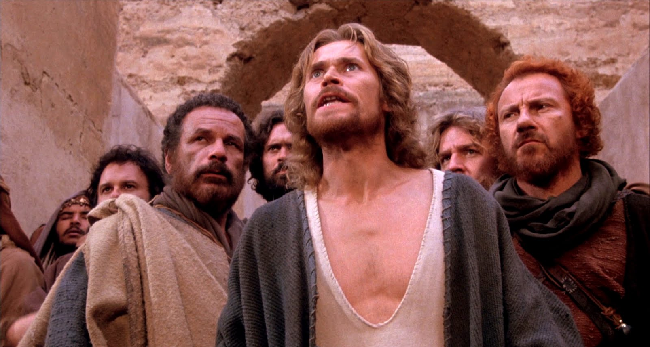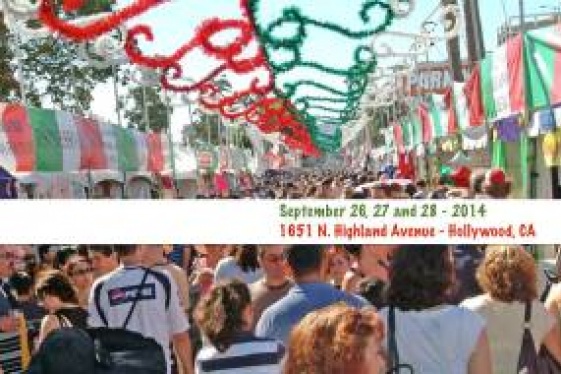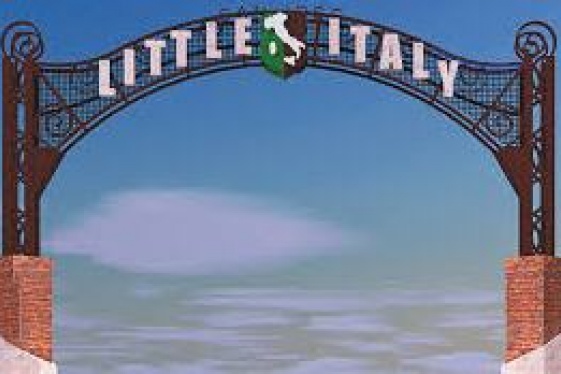
Bodies, Shadows and Stories: Cinema after Caravaggio

In conjunction with Caravaggio and His Legacy, and with the special support of the Academy of Motion Picture Arts and Sciences and of the Italian Cultural Institute in Los Angeles, LACMA is screening five features that show how the Italian painter's groundbreaking style resonates with filmmakers.
Though the films in this series span thirty years and dissimilar filmmaking cultures, from the Italy of 'il miracolo economico' to Thatcherist England, they firstly all share an aesthetic affinity for Caravaggio's chiaroscuro shadings—dramatically contrasting the human form with its surroundings, creating a dialectic of light and dark that summons the tension between the physical and the phantom.
These films also expand on the concentrated theatricality of Caravaggio's compositions. Radicalizing the "motion" picture's baseline of movement through time, these visionary films explore the elegance and disquieting precision of long take mise-en-scene. Life is abstracted into sculptural relief and through cinema's subliminal twenty-four-frame pulse reanimated into images of quiet ecstasy and transfixing mystery. And, lastly, these films bring the dispossessed and the marginal to the foreground, out of the shadows and into sharp focus.
The series will be inaugurated on January 18 with a double feature. O Sangue (Blood) (1989), the film debut of Pedro Costa, is a fable-like tale of two brothers coping with their father's death, which endows Costa with the opportunity to synthesize the earthy lyricism of Dreyer, Bresson, and Murnau with the twilight atmospherics of Tourneur and Laughton's Night of the Hunter. O Sangue is more than just a wellspring of mesmerizing images; it is cinema reborn from its own shadows.
The first feature will be followed by Paolo Benvenuti's Confortorio (1992). Though Benvenuti's films have premiered at such esteemed international festivals as Venice and Locarno, and he's been the subject of a complete retrospective at the 2009 International Film Festival Rotterdam, he remains little known in the United States. Molding his films in the rich tradition of classical Italian painting—especially that of Caravaggio—but also galvanized by post-1968 radicalism, Benvenuti's films are products of thorough historical research, revisiting long-gone events to reveal the truth behind the legend.
Confortorio is based on the records documenting the attempts of Catholic prelates to convert two Jewish thieves sentenced to hang in 1736 Rome. A Brechtian chamber piece that unfolds in rich, startling friezes, Confortorio is a fascinating portrait of persecution that poignantly evokes Dreyer's The Passion of Joan of Arc.
The much awaited Caravaggio (1986) directed by Derek Jarman will be screened on January 19. A singular figure not only in the history of queer filmmaking but of art itself, Derek Jarman made bold, idiosyncratic films that challenged prevailing aesthetic conventions while also becoming improbable box-office successes in his native England. A trained painter who broke into filmmaking designing sets for Ken Russell's The Devils and Savage Messiah, Jarman began making his own moving image pieces with Super 8 in the 1970s.
By the time of his landmark, color-field final film Blue (1993), Jarman was responsible for a one-man, fringe vanguard. Shot on a shoestring budget and starring such future screen stars as Tilda Swinton (a fixture in Jarman's work) and Sean Bean, Caravaggio is far from a traditional biopic. An unconventional portrait of a flesh-and-blood Caravaggio, as recounted by the painter from his death bed, the film pays tribute to his sumptuous visual élan while also delving into allegations of crime and blasphemy. Shot entirely in an abandoned warehouse and bathed in the painter's signature palette, Caravaggio is an elegiac testament to the conflicts between artistic compulsion and private desires.
Jarman famously quipped that if the painter had been reincarnated in the twentieth century, he would have been Pier Paolo Pasolini. In fact, Mamma Roma is the second feature of this double screening.
Like Caravaggio, Pasolini drew from the proletarian ranks for his casting, preferring to source his actors from the periphery of Italian society. A painter, poet and novelist, Pasolini set Mamma Roma (1962), his second film, amid the Eternal City's torpid underbelly. Volcanic Anna Magnani stars in the title role as a prostitute risen from the lower depths to reclaim her son Ettore (whom Pasolini discovered waiting tables and thought looked "just like a Caravaggio figure") after years away. But when one of her former petty crook beaus resurfaces, Magnani faces jettisoning her hard-won stability.
A neo-realistic street opera that potently blends grandiloquence and grit, Mamma Roma was attacked by both the Right and the Left in Italy and was even momentarily banned. It was largely unseen in the U.S. until it was finally distributed here in 1995, three decades after its initial Italian release.
The film series dedicated to Caravaggio will close on January 20 with The Last Temptation of Christ (1988), directed by Martin Scorsese. Between the commercial successes of The Color of Money and Goodfellas, Martin Scorsese directed one of his most adventurous pictures. Based on Nikos Kazantzakis's novel and adapted for the screen by Paul Schrader, The Last Temptation of Christ presents Jesus as a man torn between being both fully human and divine. In his pursuit "to do Jesus like Caravaggio," Scorsese has summoned a fitting band of outsiders: alongside Willem Dafoe, Harvey Keitel, and Barbara Hershey, Scorsese selected David Bowie, Harry Dean Stanton, and John Lurie to bring contemporary flavor to antiquity.
As part of the same project, the Italian Cultural Institute of Los Angeles will host the screening of the 2007 feature film Caravaggio, directed by Angelo Longoni and shot by Vittorio Storaro, on Janury 29th.
For more information on the entire series, visit LACMA website at http://www.lacma.org/series/bodies-shadows-and-stories-cinema-after-caravaggio.
fonte: L'Italo-Americano
You may be interested
-
“The Art of Bulgari: La Dolce Vita & Beyond,...
by Matthew Breen Fashion fans will be in for a treat this fall when the Fine Arts Museums...
-
13th Annual Galbani Italian Feast of San Gen...
In September of 2002, some of Los Angeles' most prominent Italian American citizens got to...
-
1st Annual Little Italy Cannoli Tournament
Little Italy San Jose will be hosting a single elimination Cannoli tournament to coincide...
-
Candice Guardino Brings GILDA AND MARGARETTE...
Candice Guardino is adding to her list of successful theatrical productions with the debut...
-
Festa Coloniale Italiana 2012
We are very excited to announce that on Saturday, August 11, The San Francisco Italian Ath...
-
ISSNAF medical imaging science chapter meeti...
AGENDA 12.00 – 12.15 Light lunch12.15 – 12.30Welcome addresses Lorenzo Mannelli, MD, PhD...
-
Little Italy Arch Groundbreaking Celebration
**The ceremony will be held in Little Italy SJ at W. Julian and North Almaden (Next to Pae...
-
The Great GRAVY/SAUCE Cooking Competition
September 26/27 - 3 PM - 1651 N. Highland Ave, 90028The Great Gravy/Sauce Cooking Com...










